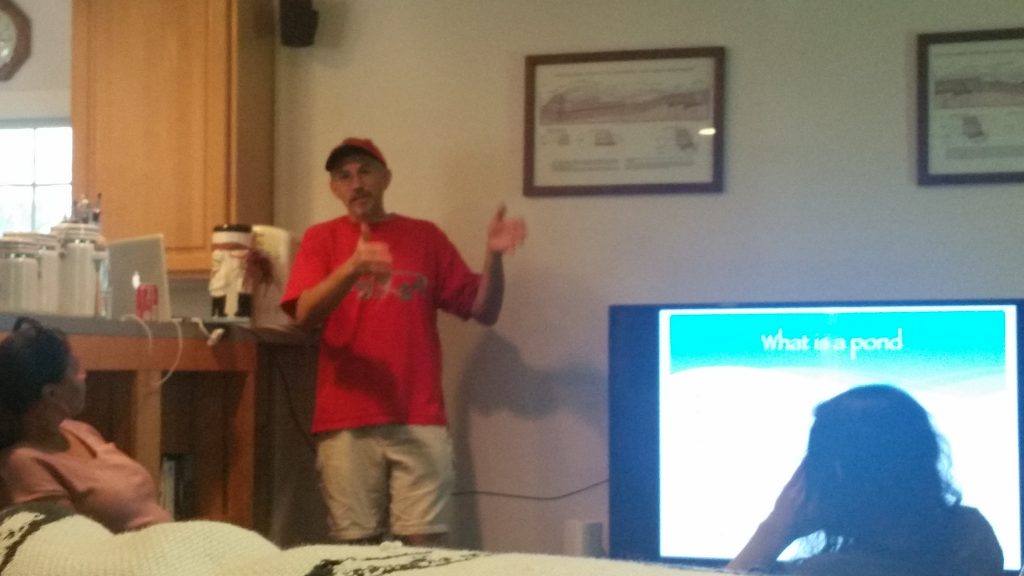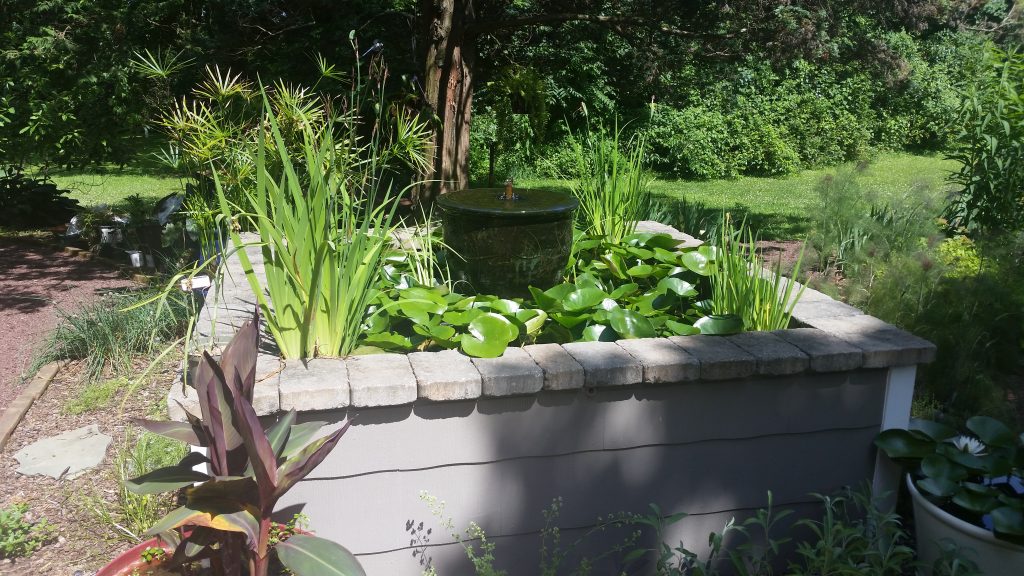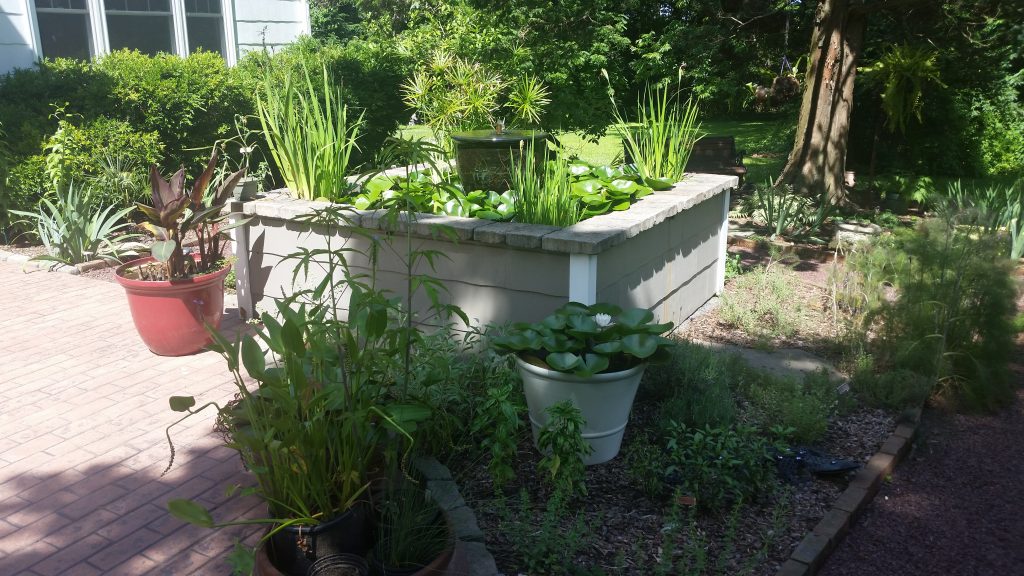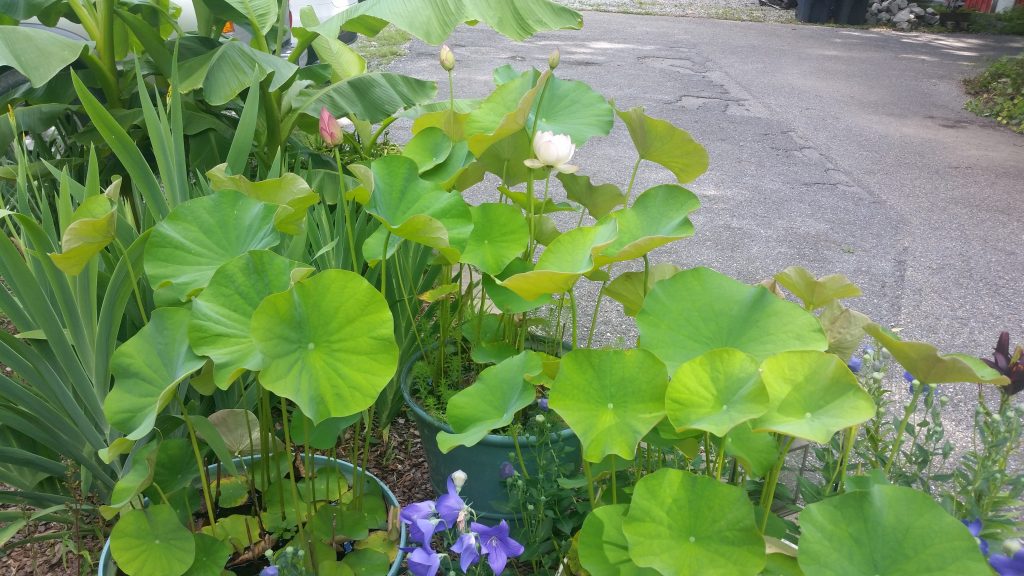June 2019 Meeting
Our June meeting was hosted by Tim Koles at his house in Glenn Dale, Maryland. About twenty people braved the drive, the “dangerous” intersection, and hidden gravel driveway to hear Tim’s talk about ponds and to tour his property.
As it turns out, there is no technical definition of a pond, but for the purposes of the talk, it refers to any crater, depression, or container that holds water.
So, why have a pond? Besides the fact that they are beautiful, serene, and pleasurable, it also allows you to keep bigger and different kinds of fish and plants than you can in an aquarium. It is also a nice habitat for many different kinds of native wildlife.
Before you make your pond, you need to plan on what kind of pond do you want. Do you want a formal or more natural looking one? Is it going to be above or below ground? What shape is it going to be? How much space does it need?
Tim discussed the different types of ponds and materials that can be used to create them. The smallest and perhaps easiest to start with is a patio pond. This is any barrel, container, or pot placed above ground and filled with water. This is a good option for anyone that doesn’t have a yard. For in-ground ponds, there are different types of materials that can be used. This includes: a hard shell (a pre-formed shape that you just stick in the ground), a natural/betonite clay pond (depending on the type of soil you have, this combination may be enough to hold water), a poured concrete pond (hard to maintain, can crack, not easy to repair), and a liner (most flexible option).
Liners come in different materials: polyethylene, PVC, or EPDM rubber. Liners are flexible because they are laid over the hole, and can be draped accordingly, as opposed to a hard shell pond where you have to dig the hole to match the shape. The drawback to ponds with liners is that they need an underlayment (usually carpet padding or carpet).
Next, he went over some important things to consider when building a pond. First of all, placement. Where is the pond going to go? You want to make sure that your pond isn’t at the bottom of a run-off area where it could potentially get contaminated by fertilizer, but you also don’t want to put it in a place where it could potentially flood your house if there is a heavy rainfall.
You also need to think about where you are going to hide the equipment, how much sun it is going to get, and make sure that it is appropriate for both planting and for meeting your fish’s needs. It is also important to note that if you plan on overwintering your fish outside, the pond needs to be at least three feet deep to prevent the pond from freezing solid
In terms of edges for a pond, Tim prefers either a pebbled beach look, or something that has planting pockets. The planting pockets are a good option because emergent plants work the best for filtration. You can also use large rocks to surround the outside, but that doesn’t look quite as good since it doesn’t occur in nature.
If you want to put fish in your pond, consider the type of fish you want vs. the type of plants you want in your pond. Koi fish in a water garden is generally not a good idea. For your water garden, goldfish such as comets or shubunkins are a good option, as are native species such as sunfish. If you plan on having native fish, check your local regulations first, as there may be restrictions or protections on certain fish.
Here is a photo of Tim giving his talk, and some photos of his amazing ponds and plants:



